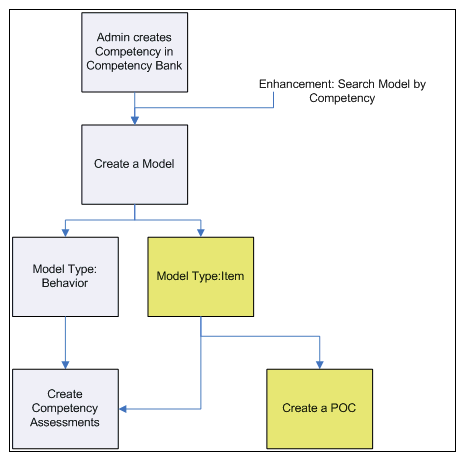Competency Assessment Models - Overview
Competencies can be used to identify competency and skill gaps using 180 and 360 degree feedback, self-assessments, and custom built competency models. The system can dynamically generate an individual development plan and recommend training or developmental activities based on an employee's competency assessment. Competencies can also be included and rated within a performance review.
Administrators can perform the following:
- Associate models with any organizational unit (OU) type.
- There is no limit to the number of OUs that can be associated with a competency model. However, each OU can only be associated with a single competency model. If the selected OU is already associated with a competency model, an error is displayed.
- If the competency model is associated with a group, multiple competency models may be assigned to users that belong to multiple groups. When this occurs, the system uses the competency model for the group to which the user was most recently added.
- Group Competencies by categories with a 3-tier structure.
Competencies and competency models can have multiple versions. Certain modifications to competencies and competency models affect other areas of the system in different areas. See Competency and Competency Model Versioning .
Workflow and Rules

The type of competency model that is used by an organization's HR department is determined by the level of detail they prefer to include. The behavior-based model is more in depth and requires more effort to establish. Some organizations may feel the item-based competency model is adequate and more appropriate for the competencies being evaluated.
- An Item-based competency model rates a competency item on a scale (e.g., 1 to 5, where 1 may be Unacceptable and 5 may be Consistently Excels).
- A Behavior-based competency model rates a competency item by behavior descriptions. The assessor selects the behavior description that best describes the individual being assessed (e.g., "Prefers to let others handle problems and challenges" or "Is consistently creative in problem solving and solutions"). This competency model type is more in-depth and requires more effort to establish.
Quick Start Guide for Competencies
Select the following link to view a guide to getting started with competencies, including creating competencies, competency models, and tasks.
See QUICK START GUIDE - Competencies.
Contents
The following information is available within this folder. Click a link to navigate directly to the appropriate topic: